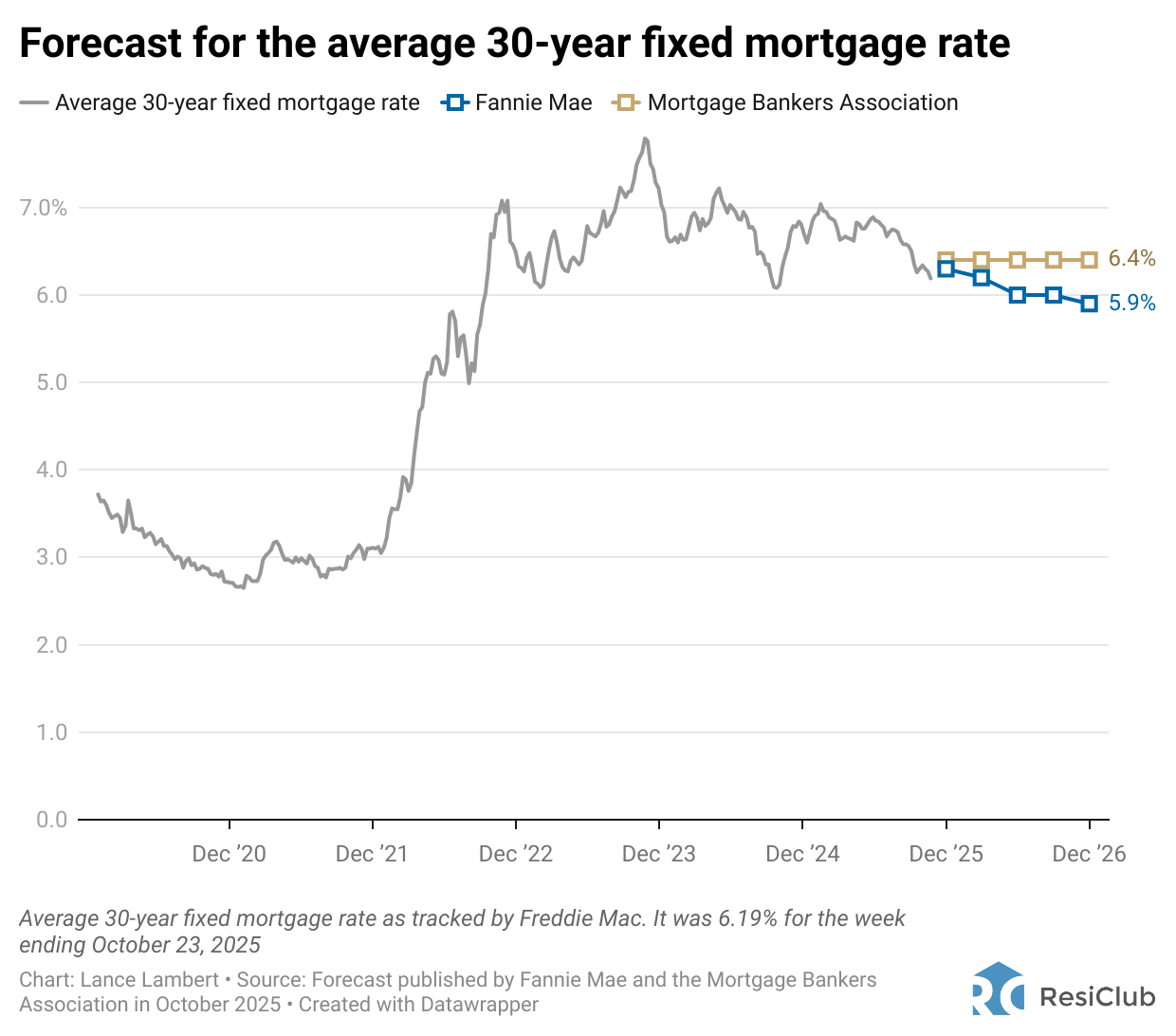- ResiClub
- Posts
- Fannie Mae and MBA agree: Most of the mortgage rate relief is already behind us
Fannie Mae and MBA agree: Most of the mortgage rate relief is already behind us
The average 30-year fixed mortgage rate tracked by Freddie Mac is 6.19%, down from 6.54% a year ago. Many economists believe that most of the short-term mortgage rate compression is already behind us.
Today’s letter is brought to you by Lennar Investor Marketplace!
Searching for markets with strong rental demand? As an SFR investor, the ability to choose from Lennar ’s vast network of more than 90 markets nationwide is a significant advantage. With such a wealth of options, you can more easily find properties that align with your specific investment goals, whether you're aiming for higher cash flow, top-rated schools or long-term equity growth.
The Lennar Investment Marketplace platform simplifies the search for the right investment by offering detailed insights into each area, along with projected rental returns for its 2,000+ curated homes. Every property is move-in ready and has been thoroughly vetted for legal compliance, financial performance, and rental demand so you can confidently grow your portfolio in major rental regions across the country.
Join today to access Lennar ’s curated properties in 90+ high-demand rental markets
MBA and Fannie Mae’s 2026 mortgage rate forecast
The average 30-year fixed mortgage rate sits at 6.19%, down from 6.54% a year ago. While that decline represents some welcome relief for homebuyers, economists at both Fannie Mae and the Mortgage Bankers Association (MBA) believe most of the short-term mortgage rate relief is already behind us.
Both Fannie Mae and the MBA released 2026 forecasts this month showing not much change from here. Fannie Mae expects the average 30-year fixed mortgage rate will fall to 5.9% by the fourth quarter of 2026—a decline of just 0.3 percentage points from today’s levels. The MBA’s forecast is even more conservative, calling for an average 6.4% rate by late 2026, which would actually mark a slight uptick.

Their shared view underscores a growing consensus among economists: the easy phase of mortgage rate relief has passed unless something material changes in the economy.
Both organizations do anticipate a mild shift in the broader economy/labor market. The U.S. unemployment rate, currently 4.3%, is expected to soften a tad, with Fannie Mae projecting 4.4% by the end of 2026 and the MBA expecting 4.6%. While that would mark further labor market softening, it’d hardly be a full-blown break in the labor market.
Let’s say they’re wrong and mortgage rates fall more than expected. What happens?
There’s a potential wildcard—an economic slowdown. If joblessness were to climb faster than anticipated or if the economy were to meaningfully deteriorate, that could put additional downward pressure on both Treasury yields and mortgage rates. In that scenario, mortgage rates could dip more than the baseline forecasts suggest.
The "mortgage spread" represents the difference between the 10-year Treasury yield and the average 30-year fixed mortgage rate. Last week, the spread stood at 218 basis points. If the spread—which widened when mortgage rates spiked in 2022—continues to compress/normalize toward its long-term average since 1972 (176 basis points), it could help push mortgage rates lower even if Treasury yields hold steady.
One last thing… Mortgage rate forecasts should always be taken with a grain of salt—at least to some degree. Predicting long-term yields depends on accurately anticipating inflation, Federal Reserve policy, and the broader trajectory of the U.S. and global economies—all of which are notoriously hard to get right. Over just the past five years, forecasters have been caught off guard by a pandemic, a historic inflation spike, and one of the fastest rate-hiking cycles in modern history. The lesson? Even the best models can’t account for every shock. Mortgage rate forecasts are useful guideposts—but not guarantees.
